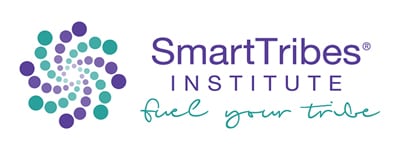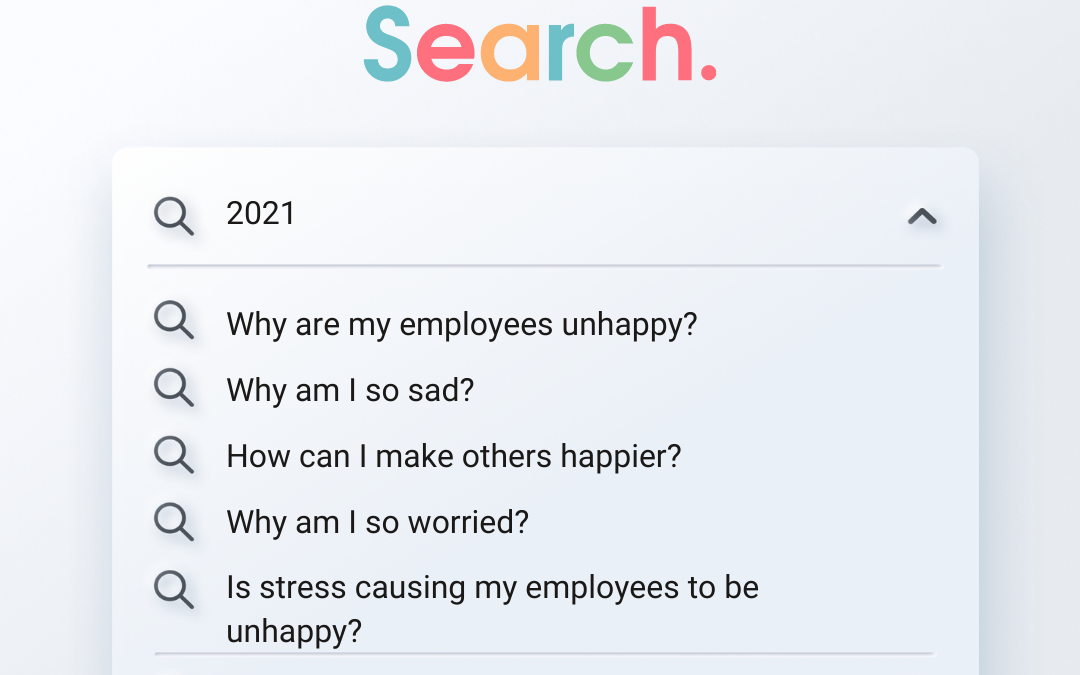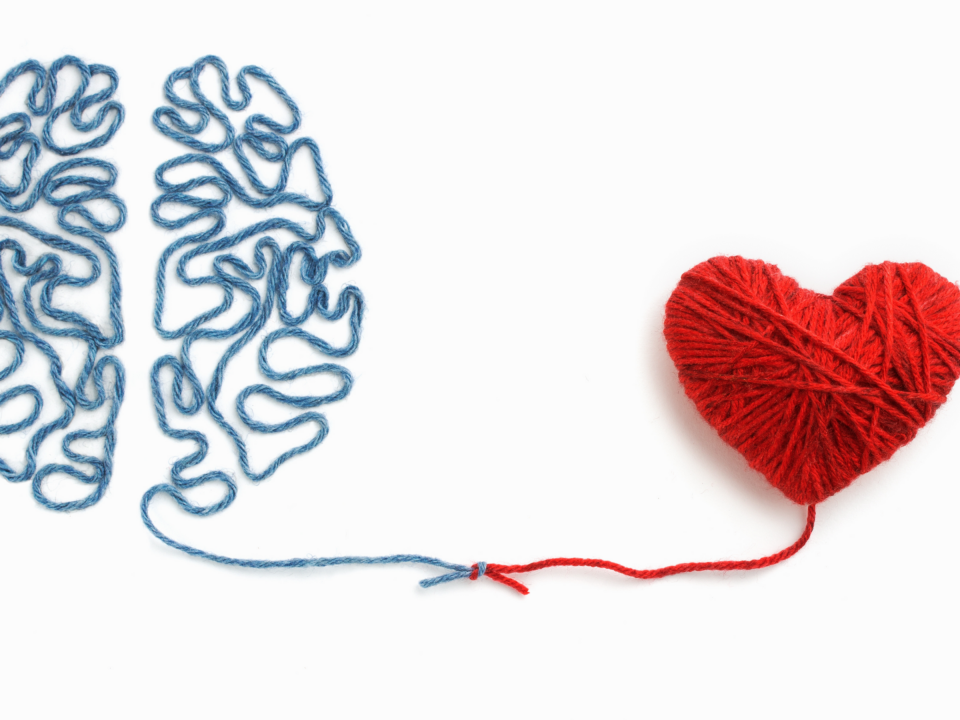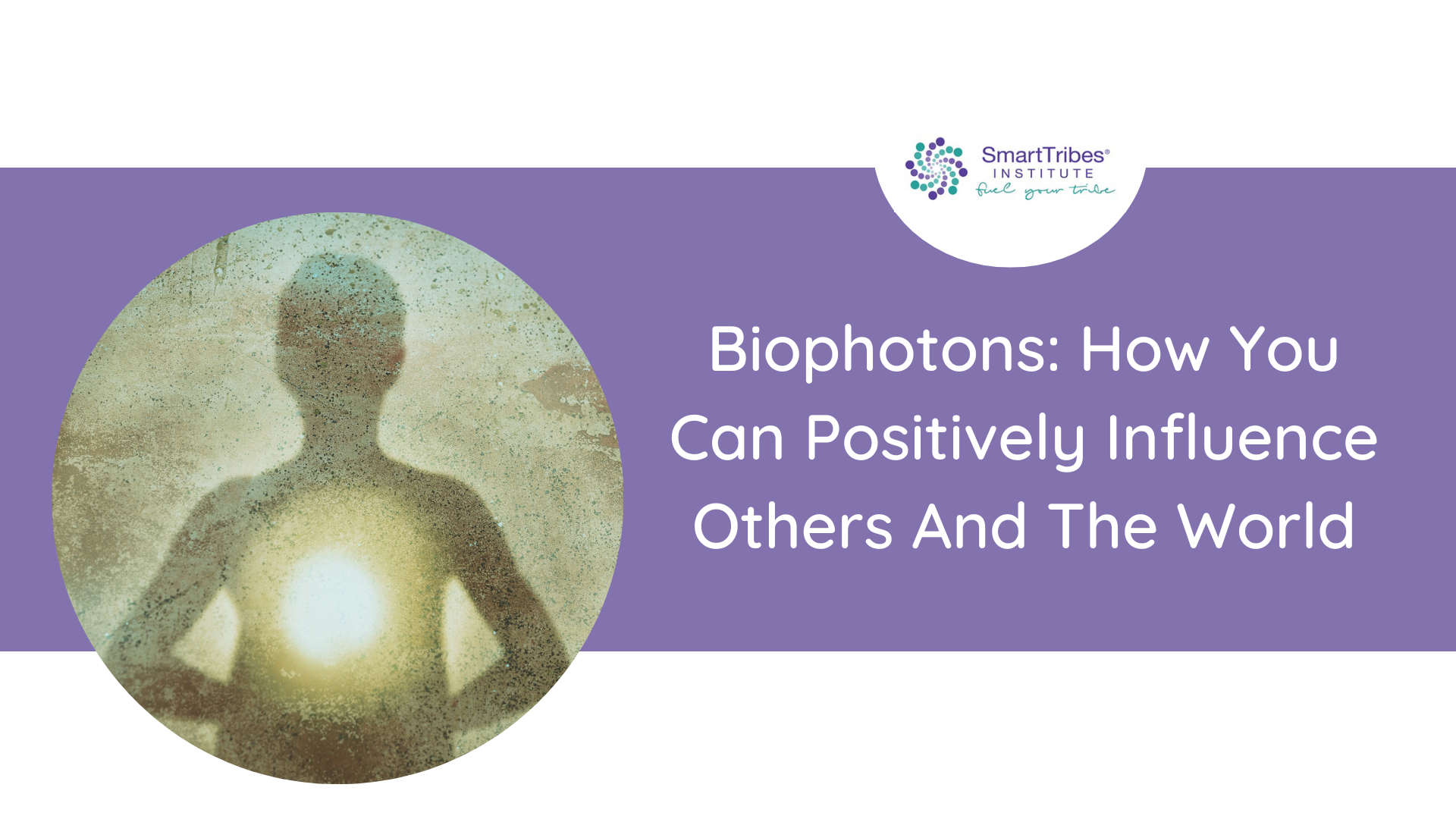
*As originally seen on Forbes.com
Unhappiness has been increasing globally for a decade.
And it’s time for leaders to address this in the workplace. In a recent report by Gallup on the global rise of unhappiness, they noted that almost every world leader has missed this disturbing trend.
Why? Well, according to Gallup, it’s because leaders are paying attention to numerical measurements like GDP or unemployment, instead of emotional measurements like their employees’ well being.
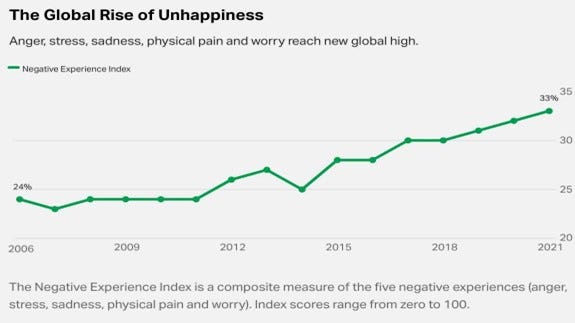
So, what does this mean for the workplace?
I’ll get to that, as well as how you can help reduce this trend in your organization, in moments. But first, we need to dive a little deeper.
Emotions Matter
We all know that we’re in the midst of a mental health crisis. Have you noticed that in the early days of COVID-19 people were more warm, more helpful, there was a strong feeling of ‘we’re in this together’ and community? Even when we were in lockdown, we were having a life-changing shared experience. But lately it seems like people are becoming angry, saying they’re ‘over Covid’ and thus the feeling of togetherness of the early days is a mere memory. As Gallup says, “if you feel like the world is getting more negative, you’re right. People are reporting more stress, sadness, physical pain, worry and anger than at any point in the history” of Gallup’s tracking.
Here’s how your team might be feeling, based on Gallup’s research:
3.3 billion people want a great job, but only 300 million have one.
2 billion people are struggling on their current income.
Over 1 billion people are so dissatisfied with their community that they want to leave it forever.
In 2020, three in 10 people worldwide experienced food insecurity.
Over 300 million people don’t have a single friend.
And this is not simply a result of the COVID-19 pandemic. Look back up to the first graphic: negative emotions have been rising for a decade.
2 Things to Do Right Now
First, let’s look at the neuroscience. Here’s what stress, change, isolation do to the brain, which is how we got into this mess:
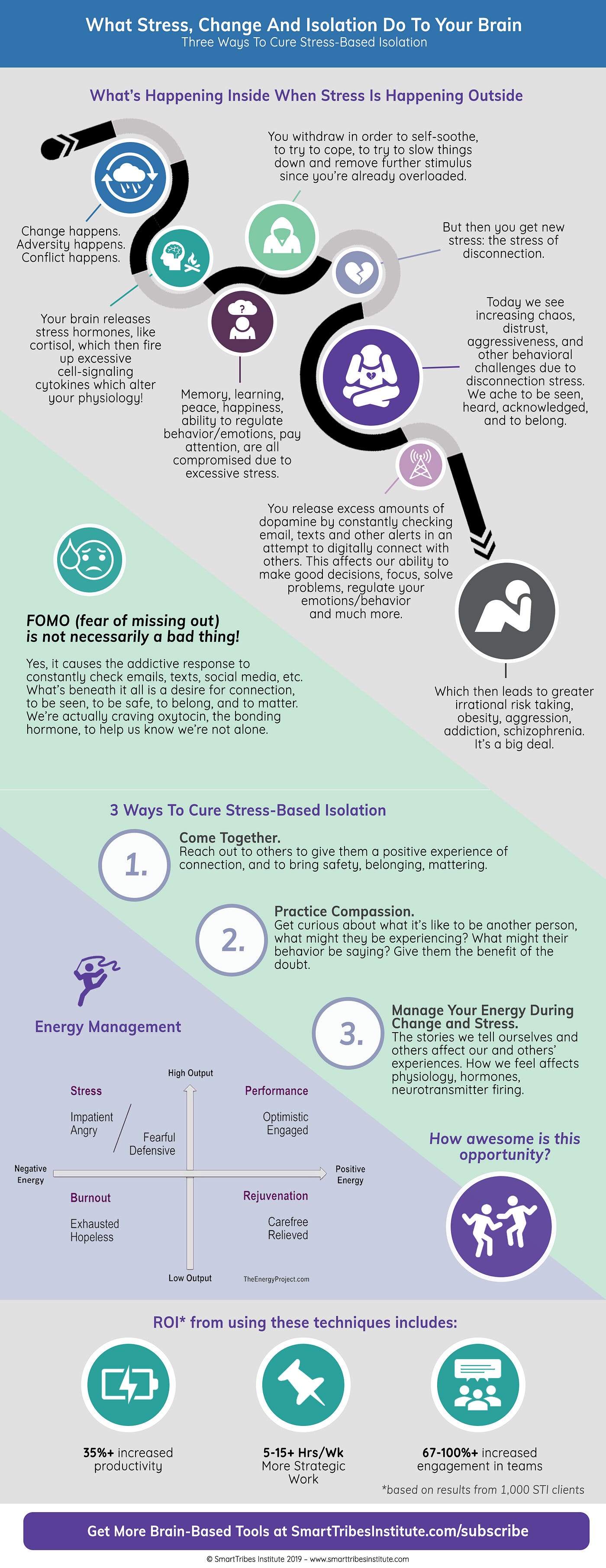
- Come Together
Create a tribal identity for your team. Ask who are you together? Explorers? Innovators? Cowboys and Cowgirls wrangling wild creatures? Make it lively and fun. A shared identity at work gives everyone energy and encourages togetherness.
Oxytocin (emotional connection) -> Serotonin (feel good) -> Dopamine (anticipate feeling good more and more!)
Enroll everyone on their experience of each meeting. Do a real-time individual rating at the meeting’s end (scale of 1–10, where 10 is the highest/best score):
· How productive was the meeting for me?
· How much did I learn?
· How much connection did I feel?
Share Weekly Wins so all feel powerful/momentum. Have each person submit (via Google sheet or other method) their key 1–3 or so wins for the week. All answers are ‘right’. A win is what it feels like to the individual.
Start meetings with a Personal/Professional check-in + Emotion Wheel. This takes about 1 minute per person. You want to launch the meeting knowing what’s up for everyone and how they’re feeling — you may pivot as a result.
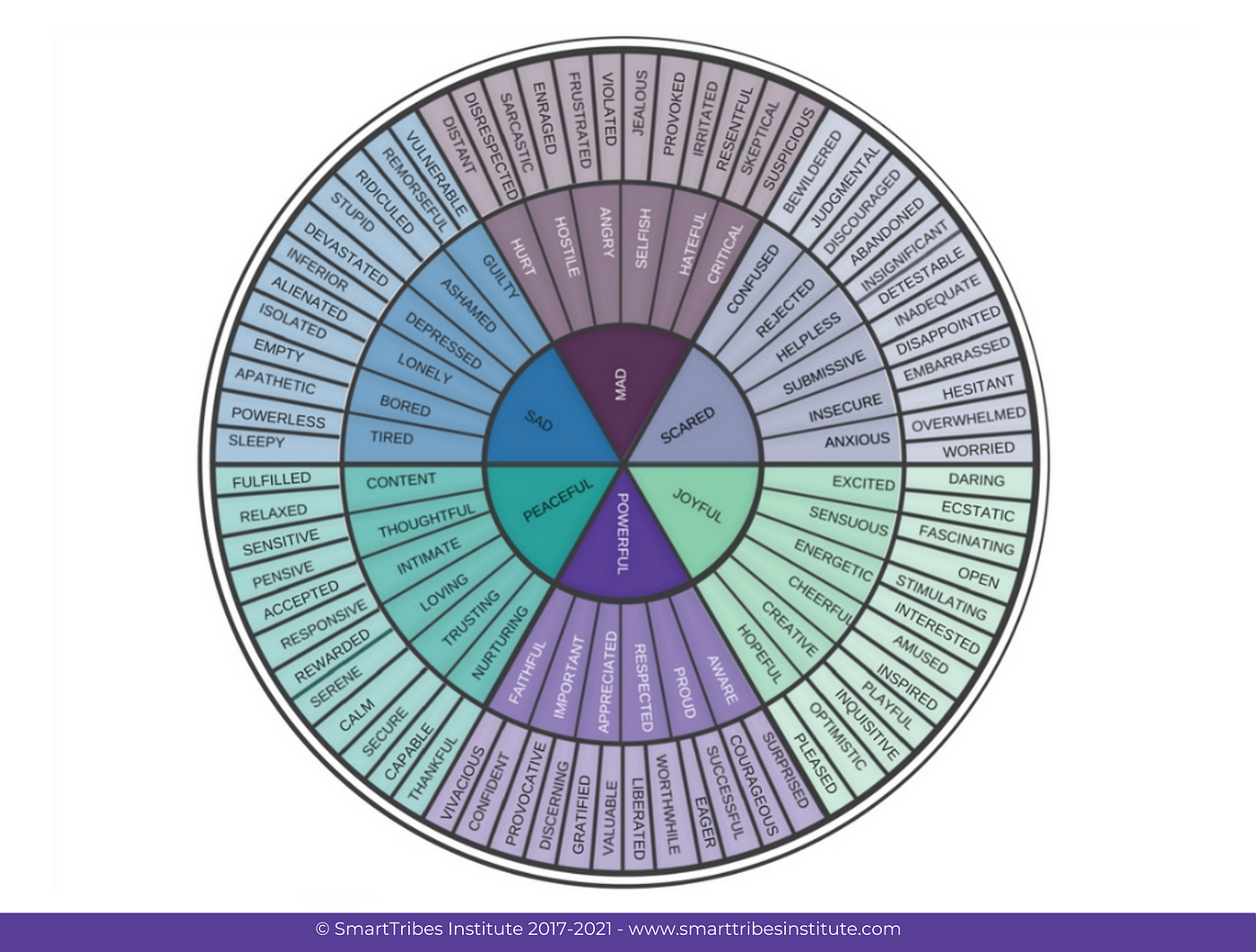
Ensure passion, play, release. Here are some ways:
· Have ‘No Work’ meetings where you get to know one another. Here’s a list of sample questions to ask. Log the answers so you remember what matters to people.
· Learn together — monthly at a minimum — even a 15-minute monthly learning session will bring people together.
· Note and honor all key personal life events — babies, birthdays, deaths, marriages, you name it. Your team is human. Acknowledge that.
2. Care About Their Self-Care
I highly encourage you to share this Self-Care Assessment with your team. It’ll help them understand where they need to increase their self-care and it’ll show them that their emotional and overall well being matters to you. You may even want to have small groups share their answers. This will deepen the feeling of humanity in the workplace, and this cocktail of oxytocin, serotonin and dopamine will increase an individual’s connection to your organization.
While we can’t bring happiness to the world overall, we can to the workplace. Which of the above ideas will you implement this week?
